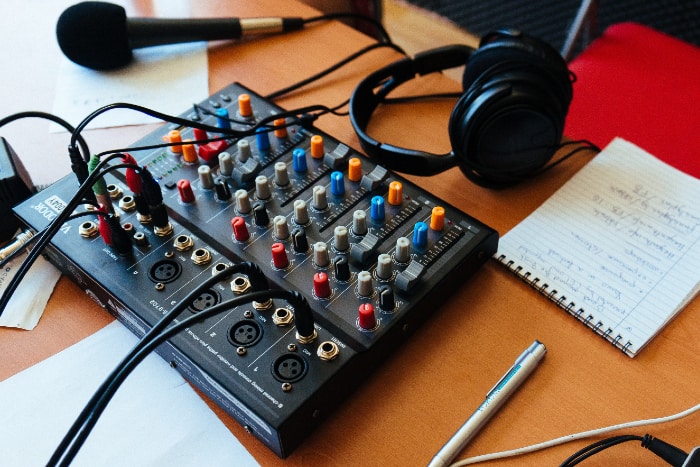Estimate reading time: 3:24
The audible quality of a podcast depends on many factors such as microphone placement and recording environment; however compression, a tool used to level your volume, plays a big role in achieving that professional sound. So what exactly is audio compression and why should you use it in your podcast?
One of the most irritating aspects of recording speech is the discernible variance in volume (amplitude). The difference between the loudest and quietest narration is jarring to the listener. Commonly known as "dynamics", these noticeable differences in volume quickly become intolerable. As a podcaster you should be concerned: the more "peaky" your speech is, the less likely people are to download your podcast.
Finally, podcasts with varying volume dynamics, sound even worse when heard on earbuds and headphones.
Here are a few tips for using a compressor to balance out the volume dynamics of your podcast.
- Read more on How To Record Voice Overs
- Read more on Understanding Podcast Equipment A Step By Step Guide
- Read more on How To Eliminate Breath and Swallow Sounds When Recording Your Podcast
What is an audio compressor?
A compressor reduces the loudest portion of your speech and boosts the quieter parts resulting in a less dynamic yet consistent overall sound output. Generally, compression is added during the audio editing phase in post production. Alternatively, one can also use compression during the recording process therefore eliminating compression during post. Lastly, most audio engineers suggest using compression during the recording phase only sparingly allowing you the option to add more, if necessary, at a later stage.
How to use a compressor for a podcast?

Most audio editors come equipped with a stock compressor. Refer to your audio editor’s manual for more details. In general, compressors come with a host of varying parameters. We’ll discuss commonly used settings to achieve the desired effect: outputting consistent volume through time. Lastly, options and parameters vary from one compressor to another.
Common parameters of a compressor:
Ratio: Set the ratio of compression between the input and output level. For example a ratio of 4 means that for every 4 dB of input above the threshold, the output level will only increase by 1dB. A ratio of 1 to 1 results in no compression
Attack: Sets how long it takes to reach maximum compression once the signal exceeds the threshold
Release: Sets how long it takes compression to stop after the signal drops below the threshold.
Threshold: This sets the input level at which compression will begin
Output Gain: This sets the amount of gain applied to the signal after compression.
Common setting
Ratio: 4:1
Attack time: fast attack
Release time: moderate
Is compression necessary?
You don’t need to compress voice overs if you’ve got a well-recorded podcast episode. However, a little compression goes a long way. In the end, you’ll smoothen out those moments when your voice gets a little too loud while beefing up softer passages. Be sure not to overdo compression though; It’s an addictive tool that often overused causing over-compression. For instance, over-compression can suck the life out of your natural intonation making your voice sound sterile. Additionally, highly compressed audio is tiring to listen to. It's been shown to induce fatigue for listeners. The trick to using compression is a make it sound natural: aim for transparency.
Beware the noise floor

Beware of applying too much compression to your signal source especially if the signal contains ambient background noises. Remember that compression not only boosts the overall signal but takes your quieter “background noises” and raises them considerably. This results in overall noisy audio output. What this means is that you should aim to record in quiet environments and if possible, acoustically treated spaces. Remember, a little compassion goes a long way.
Conclusion:
Mastering compression takes time and practice. The best way to “hear” compression is to use your ear and make comparisons as you apply various settings to your audio. Lastly, take incremental steps to apply small amounts of compression. You can always add more when you're got the hang of it.



